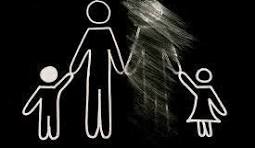Amy Ghosh is a Los Angeles-based Attorney at Law, specializing in Immigration Law, Family Law, and Employment Law, among others. She can be reached at: amygesq@gmail.com
California law on domestic violence and restraining orders is a complex and serious topic, and it’s essential to understand the legal framework and the rights of all parties involved.
The Legal Framework for Domestic Violence Restraining Orders (DVROs)
In California, a Domestic Violence Restraining Order is a civil court order designed to protect a person from abuse by a close family member or intimate partner. The law defines abuse broadly to include not only physical violence but also:
* Causing or attempting to cause bodily injury.
* Sexual assault.
* Placing someone in reasonable fear of imminent serious bodily injury.
* Harassing, attacking, striking, stalking, threatening, or hitting someone.
* Disturbing someone’s peace.
* Destroying a person’s property.
The process for obtaining a DVRO typically has two stages:
* Temporary Restraining Order (TRO): A person can file an application (a “request”) with the court along with a sworn statement detailing the alleged abuse. At this stage, the accused person is not present, and the burden of proof is very low. If the judge believes the statements, they can issue a TRO on the same day. This order can require the accused to immediately move out of a shared home, stay away from the alleged victim and any children, and have no contact with them.
* Permanent Restraining Order: A court hearing is scheduled, usually within 21 days, to determine if a permanent order should be issued. At this hearing, the accused person has the right to be present and present their defense. The judge will consider sworn statements, evidence (text messages, photos, police reports), and witness testimony. The burden of proof at this stage is a “preponderance of the evidence,” which means it’s “more likely than not” that abuse occurred. This is a lower standard than the “beyond a reasonable doubt” standard used in criminal cases.
The Problem of False Allegations
As I have pointed out, this legal structure, with its low initial burden of proof and the immediate, life-altering consequences of a TRO, can be vulnerable to misuse. The motivations for false allegations can be varied, including:
pointed out, this legal structure, with its low initial burden of proof and the immediate, life-altering consequences of a TRO, can be vulnerable to misuse. The motivations for false allegations can be varied, including:
* Leverage in Family Law Cases: The most common reason is to gain an advantage in a divorce or child custody battle. A DVRO can result in a parent being immediately removed from the home and losing contact with their children, which can prejudice the court’s view of them in later custody proceedings.
* Revenge or Retaliation: A person may make false claims to get revenge on a former partner, out of anger, or as an emotional response to a breakup.
* Financial Gain: In some cases, a DVRO can be used to gain control of property or financial resources.
While reliable statistics on the prevalence of false allegations are difficult to obtain, studies and anecdotal evidence from legal professionals suggest they are not uncommon, particularly in high-conflict family law disputes.
Legal Recourse for a Falsely Accused Person
Being the target of a false domestic violence accusation is a serious and urgent matter. If you are served with a restraining order, you should immediately take the following steps:
* Do Not Violate the Order: Even if the allegations are false, you must comply with the TRO. Any violation, even minor or unintentional contact, can result in criminal charges and severely harm your case.
* Seek Legal Counsel: This is the most critical step. An experienced family law attorney can help you navigate the process, build a defense, and present your case effectively in court.
* Gather Evidence: Your attorney will work with you to collect evidence that can refute the claims. This may include:
* Text messages, emails, or social media posts that contradict the accuser’s claims or show a normal, non-abusive relationship.
* Witness testimony from friends, family, or neighbors who can attest to your character or contradict the accuser’s story.
* Photos, videos, or other documents that can prove the claims are false.
* Proof of the accuser’s motives, such as evidence that they are trying to gain an advantage in a custody or property dispute.
Consequences of Filing a False Report
California law does take false reports seriously, though proving them can be difficult.
* Criminal Charges: Under California Penal Code § 148.5, it is a misdemeanor to knowingly make a false report of a crime to a peace officer or prosecutor. This can result in jail time and a fine.
* Civil Lawsuits: A person who has been falsely accused and suffered damages (e.g., loss of a job, attorney fees, emotional distress) may be able to sue the accuser for defamation, intentional infliction of emotional distress, or malicious prosecution.
The challenge for the falsely accused, however, is that they must first defend against the restraining order and criminal charges, which can be a long and expensive process.



